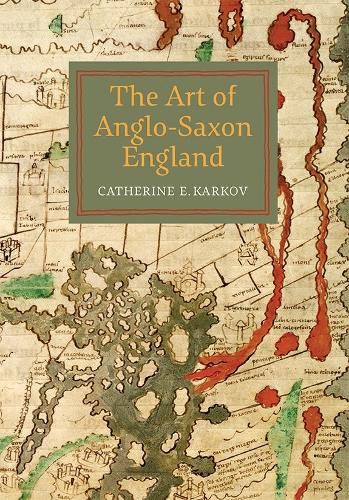Readings Newsletter
Become a Readings Member to make your shopping experience even easier.
Sign in or sign up for free!
You’re not far away from qualifying for FREE standard shipping within Australia
You’ve qualified for FREE standard shipping within Australia
The cart is loading…






Two particular perspectives inform this wide-ranging and richly illustrated survey of the art produced in England, or by English artists, between c. 600 and c.1100, in a variety of media, manuscripts, stone and wooden sculpture, ivory carving, textiles, and architecture. Firstly, from a post-colonial angle, it examines the way art can both create and narrate national and cultural identity over the centuries during which England was coming into being, moving from Romano-Britain to Anglo-Saxon England to Anglo-Scandinavian England to Anglo-Norman England. Secondly, it treats Anglo-Saxon art as works of art, works that have both an aesthetic and an emotional value, rather than as simply passive historical or archaeological objects. This double focus on art as an aesthetic vehicle and art as an active political force allows us to ask questions not only about what makes something a work of art, but what makes itendure as such, as well as questions about the work that art does in the creation of peoples, cultures, nations and histories.
Professor Catherine Karkov teaches in the School of Fine Art, University of Leeds.
$9.00 standard shipping within Australia
FREE standard shipping within Australia for orders over $100.00
Express & International shipping calculated at checkout
Two particular perspectives inform this wide-ranging and richly illustrated survey of the art produced in England, or by English artists, between c. 600 and c.1100, in a variety of media, manuscripts, stone and wooden sculpture, ivory carving, textiles, and architecture. Firstly, from a post-colonial angle, it examines the way art can both create and narrate national and cultural identity over the centuries during which England was coming into being, moving from Romano-Britain to Anglo-Saxon England to Anglo-Scandinavian England to Anglo-Norman England. Secondly, it treats Anglo-Saxon art as works of art, works that have both an aesthetic and an emotional value, rather than as simply passive historical or archaeological objects. This double focus on art as an aesthetic vehicle and art as an active political force allows us to ask questions not only about what makes something a work of art, but what makes itendure as such, as well as questions about the work that art does in the creation of peoples, cultures, nations and histories.
Professor Catherine Karkov teaches in the School of Fine Art, University of Leeds.